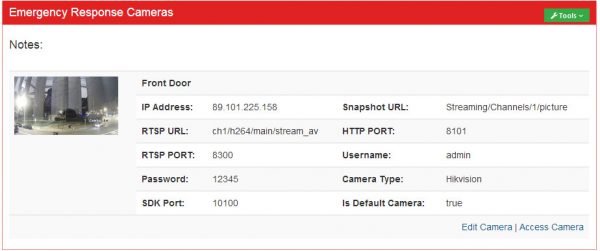
On the left hand monitor we see the Tunstall operator’s screen in its idle state – waiting for a call.

When a call is identified, either inbound or outbound, the appropriate video stream is immediately loaded in a second monitor connected to the same PC.

When the call is finished, the video session is also closed and the operator screen returns to its idle state.

This happens automatically without any interaction from the Tunstall operator
The system features a data management portal which will allow Tunstall to manage all data related to the cameras within the system.

The portal facilitates entry of the minimal customer information required.

The portal allows for the addition of camera information for each customer, as well as serving as the entry point for direct access to the camera itself.

It also provides access to the viewing logs which allow administrators to see which video streams were watched, when and by whom.
Evercam have defined and documented all procedures relating to the installation and configuration of the camera hardware required to interact with the system.
